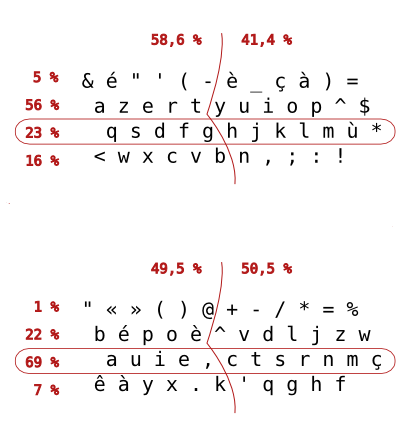You are very wrong about my locale proposal! You were looking at the "Keep local symbols" variant, which some require. I quite strongly recommend the "Unified symbols" layout. Furthermore, it's harmonized for Belgium/France/Canada so it could be useful for many!
I know, it's a lot of text and you're tempted to skip directly to the nice images. ;-)

Belgian+Canadian(Intl)+French 'Unified Symbols' Colemak[eD]
As you can see, my tack is to put the accent dead keys directly on layer 1 – the ¨^ one where the locals are already used to it, and the more important grave one right next to it! – apart from the very common Éé which deserves its own key. I'd also recommend using CurlAngleWide with it, to bring special keys to the middle and the very rare K to the middle trench.
In my Belgian/FrenchCanadian Colemak[eD] variant, letters like Œœ and Çç have to be accessed with the AltGr key but I think that's quite acceptable given their frequencies and the relatively easy access (in my opinion).
I don't remember Endaka's French Colemak all that well, but I think that my locale variant may just be better all in all. It has more advanced functionality, and to me it fits the bill.
Bépo seems nice to me, although of course I'd prefer a localized Colemak since that'd really turn the Colemak wheels faster! Also, my locale Colemak is easily transferrable to another language while this is very specifically geared towards French typing. Some French will like it for precisely that reason I guess, but it won't change anything for the rest of us as it'll be an isolated phenomenon in all likelihood; much like the Russian or Israeli layouts (but more ergonomic at least).
You'll need an ISO keyboard to type anything locale, pretty much. The ANSI keyboards have too few keys, sadly. One big advantage you get with that is that you can more easily use the Angle mod! :-)
An interesting feature is how Bépo almost has a Wide ergo mod built in! The very rare K and some punctuation gets moved into the middle. They don't seem to encourage a wide hand position with it though, so maybe it's just a freak coincidence. Without a wide position it seems silly?
Another nice thing with Bépo is its huge dead key lists. I've looked to them in my PKL files because they are so comprehensive (but then I added more, of course...!).
Last edited by DreymaR (14-Jun-2017 11:47:52)


